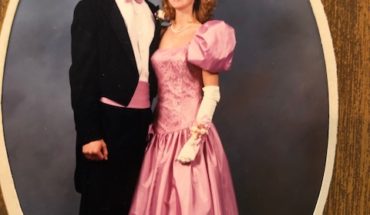 Into the Valley, by Ruth Galm, a 272 page novel, might be of interest to aspiring novelists for two reasons; one, it’s a terrific novel. And two, Ms. Galm’s manuscript was rejected over sixty times before she finally got it published.
Into the Valley, by Ruth Galm, a 272 page novel, might be of interest to aspiring novelists for two reasons; one, it’s a terrific novel. And two, Ms. Galm’s manuscript was rejected over sixty times before she finally got it published.
But Galm took matters into her own hands in a way that lots of other writers would not think to do. As the mountain of rejections piled up, Ruth Galm finally asked herself this question: would she ever quit writing? Her answer defined her. The answer was no.
“And that’s when I crossed over to the other side,” says Galm” From then on, she would write for herself. She would disregard the world of “getting published” and focus exclusively on her art. She would write not for editors and not for agents but solely for herself, come what may. Eventually it all paid off. After years of rejection, Galm says, an editor at Soho press told her that they loved the novel because “I had remained myself, had written for myself.”
Just think about that: in a day and age when a novelist wannabe is often more concerned with getting her website tuned-up just right or pumping up her social media numbers in the manic quest to get published, Galm went with artistic integrity. Go figure.
It’s a road trip story but don’t expect Thelma and Louise. It’s not a buddy novel. There are no buddies. The protagonist is utterly completely, unremittingly alone. She’s a thirty year old woman whose real name is Beverly but who is always referred to as B. It’s as if she wants to minimize herself, to disappear as she sets out in her car from San Francisco and into the American West of the 1960s.B. supports herself by passing bad checks, the only thing that seems to soothe her, She enjoys a “cool, expansive” feeling only when she is in a bank passing bad checks. Her ever-present “carsickness,” is a kind of depression which, ironically, is only relieved when she is in the car moving to her next larcenous score. “[T]he carsickness was the truth. A warmth and a clarity pouring through her to guide and protect her.” She has, it seems, one goal: to move through the West dropping bad checks like Johnny Appleseed dropped seeds.
Tone is everything in Into the Valley. She stops at a gas station halfway through the novel to find that the “The mountains were no longer visible in the brown haze…The dead dry grass pulsed at her.” This haze and the inescapable heat are vital to the novel.
Anybody who likes the movie Three Women by Robert Altman, will likely devour Into the Valley. The stories are in no-way similar, though the cast of characters in each would remind you of one another only in their archetypical social ineptness. The movie was based on a dream that Altman had. Galm’s work is likewise surrealistic in tone. In both works the American West is punished by a blinding, disorienting sun. B. passes a horse corral. “The sun blazed on the animals.” It doesn’t’ shine, this sun. It blazes. In the movie, a Coca Cola truck slowly approaches across the parching desert and you can see the heat pulsing up from the desert floor as in a mirage. It’s a scene that seems interminable. Throughout both works it’s a world is of claustrophobic heat. The sun always shines in both the movie and the book but, ironically, the characters are eternally, immutably sad.
B. rejects society much as society rejects her. Even when she tries, it seems, to engage with people out there on the road, she comes up empty. After a night of drunken lovemaking with a man she just met he sends her packing in the morning when she would have preferred to talk. When she tries to engage others along the way—say, to ask directions, they return quizzical stares. No-one seems to know what this misfit is talking about. Alone with her thoughts, B.raises loneliness and isolation to a new and dizzying crescendo of dysphoria. It’s the holy sacrament of aloneness rendered in prose as chilling as it is spooky. Her world is one that fans of latter-day Cormac McCarthy might appreciate.
But, don’t make the mistake of thinking poor B. is a woman without purpose or resolve. When people, at the end of the novel, get in the way of what she truly wants—to pass bad checks—she reacts with a swiftness and a certainty that would make most of us appear as irresolute wimps.
When it comes to kiting checks, B. is no wimp.




7 comments